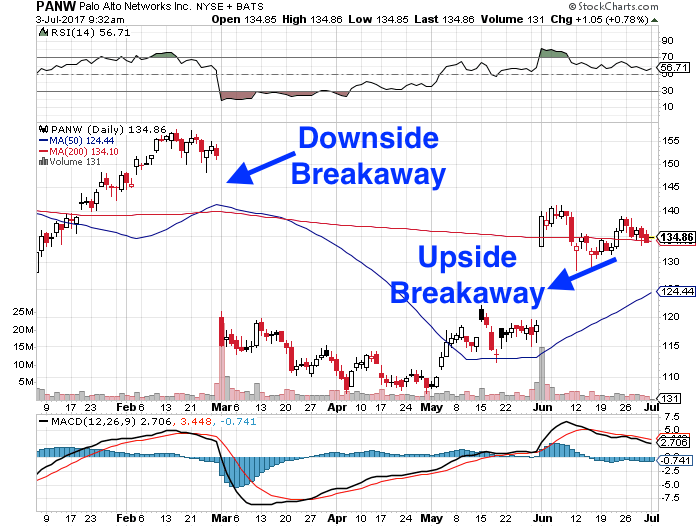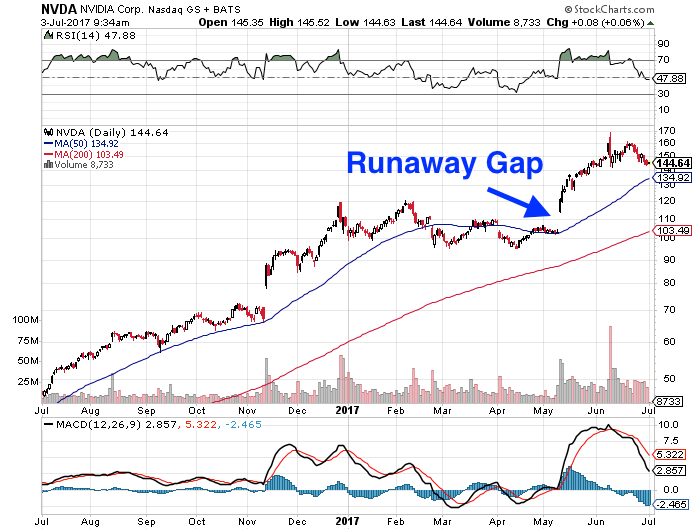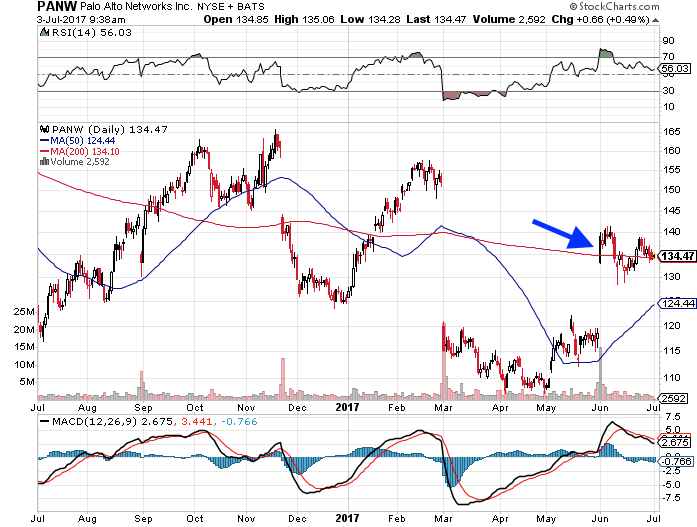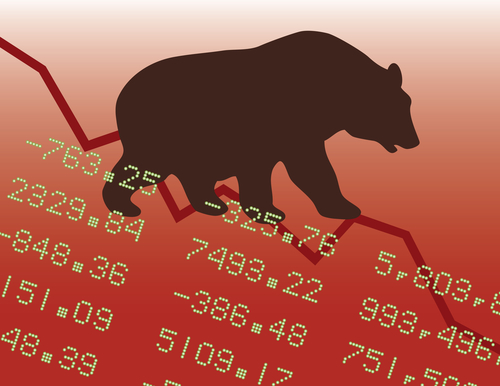Gap Trading 101

All of a sudden, there’s a gap in the chart of your favorite stock.
Surprise news, earnings, something unexpected caused a bout of extreme optimism or pessimism that resulted in the move.
Look at Palo Alto Networks (PANW), for example. In early June 2017, shares closed at $118.59. However, shortly after the close, news of a massive cyber attack began hitting headlines. Orders come flooding in overnight. The next day, the stock opens at $140.

Since there were no trades between $118.59 and $140, a gap was created.
Then again, spotting gaps on a chart is the easy part. It’s knowing what you’re looking at that can help identify potential opportunity. We can discuss three types of gaps -- runaway gaps, exhaustion gaps, and breakaway gaps.
Runaways Gaps
We can look at NVIDIA for example to see a clear runaway gap.
These will typically happen after a stock has made a strong move, and can be an indication of increased buying or selling. We can clearly see that at the start of May 2017, as the stock gapped from $103 to $120 on great earnings.

Exhaustion Gaps
Exhaustion gaps are typically created by an irrational market. All of a sudden, news of a cyber attack sent shares of PANW screaming higher overnight. These will also typically be marked by a sharp rise in volume, which we also saw in the stock on that news. In fact, shortly after gapping higher, the gap exhausted itself, resulting in a $10 swing lower.

Breakaway Gaps
With upside breakaway gaps good news creates demand. New buyers want to own the stock and are willing to pay high prices just to get it. We can see that again with PANW. Volume is also noticeably higher than normal.
Downside breakaway gaps can be created by excessive fear. Traders can’t wait to get rid of the stock in question. Volume can typically be high with these as well. We could see this with PANW, as well when it released poor earnings in late February 2017.
With many of the gaps, it’s essential that you are aware of the news and the reaction it produced. That way we can best identify what’s happening and potential opportunity.



